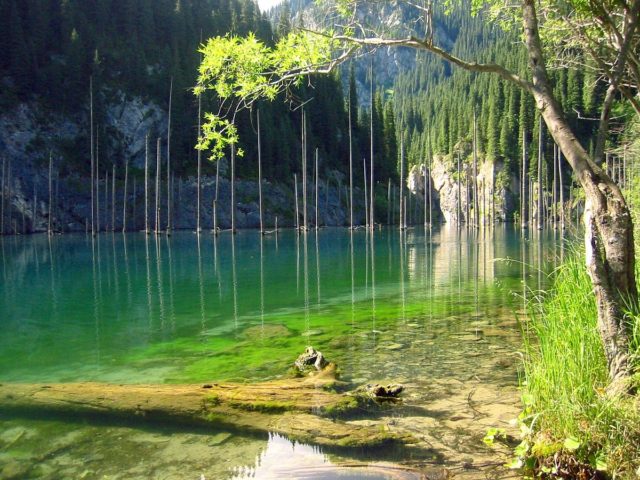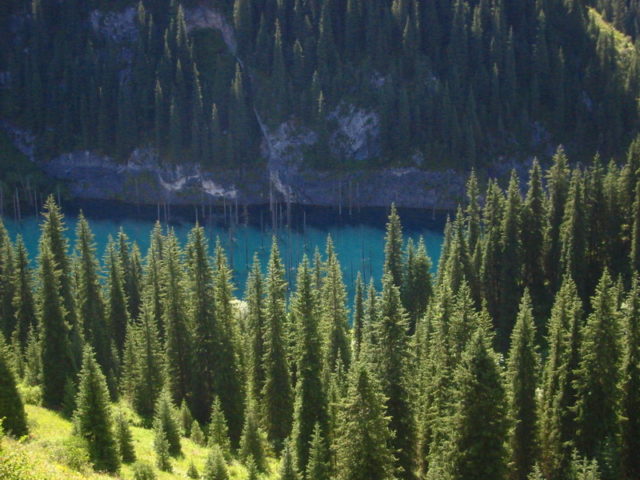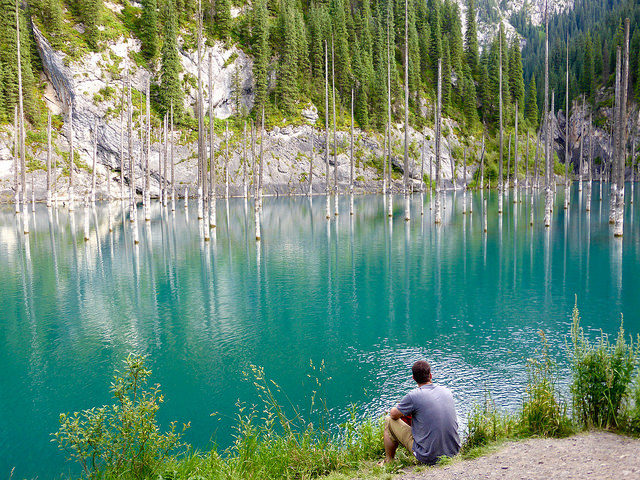Earthquakes, incredible forces of nature, can be pretty destructive to humans. Depending on their scale and strength, they can wipe out entire cities, as with the city of San Francisco in the early hours of April 18, 1906. Not only did that earthquake devastate entire neighborhoods, but it caused fires that raged for days.
Sometimes, however, a strong earthquake occurs in places not inhabited by humans, and instead of destroying, it creates some otherworldly formations or waterways. One such formation beautifully formed by an earthquake is Lake Kaindy, located in the Central Asian country of Kazakhstan.
At a distance of roughly 80 miles from the country’s largest city, Almaty, Lake Kaindy was created following an earthquake in 1911. As the earth shook and rumbled in the Tian Shan Mountains, it created a landslide of a tremendous amount of limestone rubble that formed a natural dam. After some time, the site filled with rainwater, and a new lake emerged in the freshly formed basin.
The limestone dust from the rubble is thought responsible for the color of the lake, which is a stunning bright turquoise. Little over a century later, Kaindy Lake is noted for its mesmerizing beauty. The trunks of spruce trees emerge from the turquoise as if they are the masts of a dreamlike ghost ship.

Taking a swim in the lake might sound like a fantastic idea, but only if you can withstand its icy cold water. It is roughly 1,300 feet in length and at its deepest point reaches nearly 99 feet.
While rainfall is not uncommon, what’s striking is that it was rainfall that created the lake. Captivating are the spruce trees, which even though they are partly submerged in the water, are still living and can be seen, aged over time.
No needles can be spotted on the tree trunks above water levels, but plenty remains intact beneath the surface. This is probably due to the cold water temperatures in the lake, which remain fairly freezing even during the summer months.

There is not much marine life though, and in fact, it is uncertain whether Lake Kaindy contains any fish at all. While some have reported successfully fishing here, plenty more have complained that after trying for ages, nothing would bite.
The lake now counts as part of a system of mountain lakes scattered on the north slope of the Tian Shan Mountains, and the entire area is protected as the Kolsay Lakes National Park.
The roads to Lake Kaindy are fantastic in themselves, though access is limited as only a special kind of vehicle can manage the terrain. On the way to the lake, one can come across the Saty Gorge, the Chilik River Valley, or the Kaindy gorge, all of which are scenic, so getting there is definitely worth the trouble.
There are a few other similar sunken forests that can be seen in other places, just not created by an earthquake. For instance, Lake Bezid in Transylvania was artificially formed when the entire village of Bezid was flooded. The disaster left the dwellings at the bottom of the lake, and only the local church towers and trees can be seen peeking above the surface.

Across the United States, a comparable place is Lake Caddo in Texas that takes over 25,400 acres of lake and wetland. Lake Caddo can be found in the northern Harrison County and southern Marion County in Texas, and in Caddo Parish in Louisiana.
Spectators are dazzled at the majestic sight of Cypress trees and canopies reflected in the still waters beneath. Lake Caddo is considered de facto the world’s largest Cypress forest.
